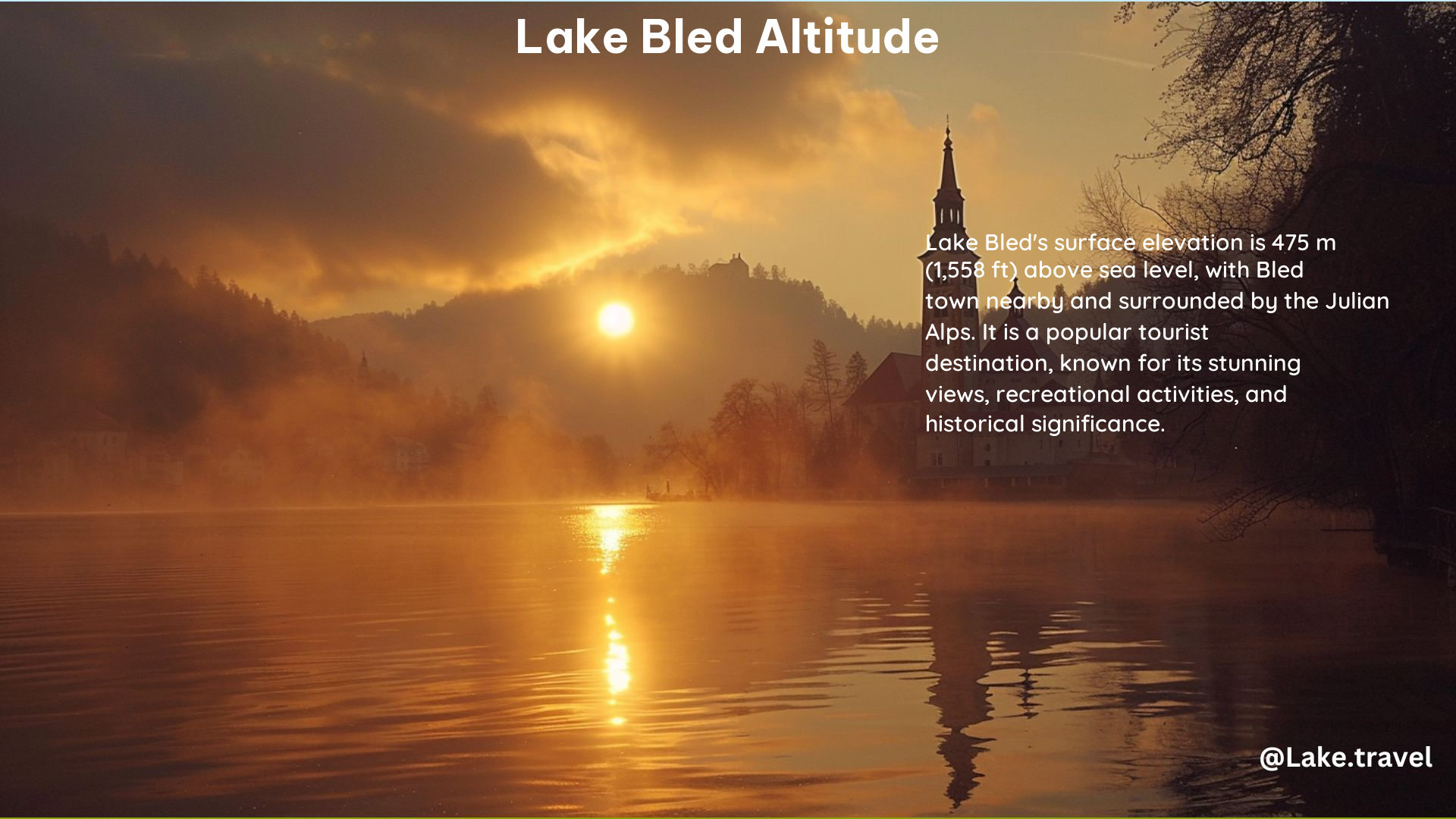Lake Bled, nestled in the heart of the Julian Alps in Slovenia, is a breathtaking natural wonder that captivates visitors from around the world. At an altitude of 1,558 feet (475 meters) above sea level, this picturesque lake offers a unique and enchanting experience for lakes touring enthusiasts.
The Precise Altitude of Lake Bled
Lake Bled is situated at an altitude of 1,558 feet (475 meters) above sea level, making it a prime destination for those seeking to immerse themselves in the stunning natural beauty of the Slovenian landscape. This elevation plays a crucial role in shaping the lake’s climate, ecosystem, and the range of activities that can be enjoyed by visitors.
The Influence of Altitude on Lake Bled’s Climate

The high altitude of Lake Bled has a significant impact on its climate. The lake experiences a continental climate, with warm summers and cold, snowy winters. The average temperature in the summer months (June to August) ranges from 68°F (20°C) to 77°F (25°C), while the winter months (December to February) can see temperatures dipping below freezing, with an average of 32°F (0°C).
The altitude also affects the precipitation patterns in the region. Lake Bled receives a moderate amount of rainfall throughout the year, with the highest levels occurring during the spring and autumn months. The winter months bring significant snowfall, which can transform the landscape into a winter wonderland, adding to the lake’s enchanting atmosphere.
The Diverse Flora and Fauna of Lake Bled’s Altitude
The high altitude of Lake Bled supports a diverse and unique ecosystem, with a variety of flora and fauna thriving in the region. The surrounding Julian Alps provide a habitat for a range of alpine plant species, including the iconic Edelweiss, which can be found growing on the rocky slopes.
The lake itself is home to a variety of fish species, including the brown trout, which is a popular target for anglers. Additionally, the lake and its surrounding areas are a haven for birdlife, with species such as the Eurasian coot, the great crested grebe, and the Eurasian wigeon commonly spotted by visitors.
Recreational Activities at Lake Bled’s Altitude
The altitude of Lake Bled offers a range of recreational activities for visitors to enjoy. During the warmer months, the lake’s crystal-clear waters are perfect for swimming, boating, and paddling. Visitors can rent traditional wooden boats, known as “pletna,” to explore the lake and admire the stunning views of the surrounding mountains.
For those seeking a more active adventure, the hiking trails that wind through the Julian Alps provide breathtaking panoramic views of the lake and the surrounding landscape. The hike to the top of Ojstrica, a viewpoint overlooking the lake, is a popular choice, offering visitors a chance to witness the stunning vistas from an elevated perspective.
In the winter, the lake’s altitude transforms the region into a winter wonderland, with opportunities for ice skating, cross-country skiing, and even ice fishing. The nearby ski resorts, such as Vogel Ski Resort, offer access to the slopes for those seeking a more traditional alpine experience.
The Unique Geological Features of Lake Bled’s Altitude
The high altitude of Lake Bled has also played a role in shaping the unique geological features of the region. The lake is situated in a glacial valley, formed by the retreat of glaciers during the last ice age. This has resulted in the creation of the lake’s distinctive shape and the steep, rocky cliffs that surround it.
One of the most iconic features of Lake Bled is the small island in the center of the lake, known as Bled Island. This island, which is accessible by boat, is home to the Church of the Assumption, a picturesque 17th-century church that is a popular destination for visitors.
The Accessibility of Lake Bled’s Altitude
Despite its high altitude, Lake Bled is relatively accessible to visitors. The lake is located just a short distance from the capital city of Ljubljana, making it a popular day trip or weekend getaway for both local and international tourists.
The lake can be reached by a variety of transportation options, including car, bus, or train. The nearest airport is the Ljubljana Jože Pučnik Airport, which is located approximately 30 kilometers from the lake.
The Cultural Significance of Lake Bled’s Altitude
The high altitude of Lake Bled has also played a significant role in the cultural history of the region. The lake and its surrounding areas have been the subject of numerous legends and folklore, with the island in the center of the lake being a particularly significant cultural and religious site.
The Church of the Assumption, located on the island, is a popular destination for visitors, who can reach it by taking a traditional wooden boat known as a “pletna.” The church is a symbol of the region’s rich cultural heritage and has been a place of pilgrimage for centuries.
Conclusion
Lake Bled, with its captivating altitude of 1,558 feet (475 meters) above sea level, is a true gem of the Slovenian landscape. Its high elevation has shaped the lake’s climate, ecosystem, and the range of recreational activities that can be enjoyed by visitors. From swimming and boating in the summer to ice skating and cross-country skiing in the winter, Lake Bled offers a diverse and enchanting experience for lakes touring enthusiasts.
Whether you’re drawn to the lake’s stunning natural beauty, its rich cultural heritage, or the thrill of outdoor adventure, a visit to Lake Bled is sure to leave a lasting impression. So, pack your bags and get ready to explore the enchanting world of this high-altitude wonder.
Reference:
– Lake Bled Official Website
– Slovenian Tourist Board
– National Geographic – Lake Bled
